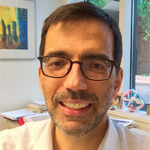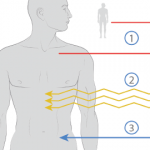Adverse events leveled off after that, and the transplant group had a significant event-free survival benefit.
Beyond those encouraging results, the study highlighted the risks of smoking in these procedures, Dr. Georges said. “There was 10% transplant-related mortality, and it was [found that] seven of the eight patients were current or former smokers,” he said. In five of these eight patients, it was found in retrospect that they had significant pulmonary artery hypertension. “This has really helped to inform us in future studies to identify that smoking is a high risk.”
MMF to Prevent Disease Progression?
Researchers at his center are now homing in on improving maintenance therapy in transplant recipients. They are now enrolling patients in the STAT trial to investigate the safety and effectiveness of MMF after high-dose immunosuppressive therapy in preventing the progression of disease.
Investigators are recruiting patients younger than 70 with severe systemic sclerosis, with diffuse scleroderma and lung or kidney involvement, who are no more than seven years out from diagnosis. Those with diffusing capacity of the lung for carbon monoxide of less than 40% or forced vital capacity of less than 45%, pulmonary hypertension, left ventricular ejection fraction of less than 50%, significant arrhythmias and creatinine clearance of less than 40 are excluded.
“So far the use of the MMF maintenance therapy after transplant is well tolerated,” Dr. Georges said. “I think this will further improve upon the outcome of patients who have diffuse systemic sclerosis.”
Additional Avenues Being Explored

Dr. Georges
Clues about other potential avenues in stem cell therapy come from the multiple sclerosis field, Dr. Georges said. In the HALT-MS trial, 25 patients received hematopoietic stem cell transplantation and high-dose immunochemotherapy consisting of carmustine, etoposide, cytarabine and melphalan, along with rabbit antithymocyte globulin before transplant.3
An interim, three-year analysis found the treatment to be well tolerated and effective in bringing about sustained remissions in the highly active relapsing-remitting MS patients.
Researchers in the trial are also examining the ways in which T cells reconstitute themselves after transplant—perhaps the largest such effort in humans ever conducted.
“A new repertoire of CD4 cell clones appears after autologous transplant, and begin to emerge as early as two months after autologous transplant,” Dr. Georges said.
“In the future, we want to do a randomized trial for multiple sclerosis and compare transplant vs. best-available therapy.”
Thomas R. Collins is a freelance medical writer based in Florida.
References
- Nash RA, McSweeney PA, Crofford LJ, et al. High-dose immunosuppressive therapy and autologous hematopoietic cell transplantation for severe systemic sclerosis: Long-term follow-up of the US multicenter pilot study. Blood. 2007 Aug 15;110(4):1388–1396.
- van Laar JM, Farge D, Sont JK, et al. Autologous hematopoietic stem cell transplantation vs intravenous pulse cyclophosphamide in diffuse cutaneous systemic sclerosis: A randomized clinical trial. JAMA. 2014 Jun 25;311(24):2490–2498.
- Nash RA, Hutton GJ, Racke MK, et al. High-dose immunosuppressive therapy and autologous hematopoietic cell transplantation for relapsing-remitting multiple sclerosis (HALT-MS): A 3-year interim report. JAMA Neurol. 2015 Feb;72(2):159–169.
